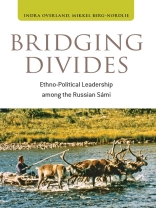The Sámi are a Northern indigenous people whose land, Sápmi, covers territory in Finland, Norway, Russia, and Sweden. For the Nordic Sámi, the last decades of the twentieth century saw their indigenous rights partially recognized, a cultural and linguistic revival, and the establishment of Sámi parliaments. The Russian Sámi, however, did not have the same opportunities and were isolated behind the closed border until the dissolution of the Soviet Union. This book examines the following two decades and the Russian Sámi’s attempt to achieve a linguistic revival, to mend the Cold War scars, and to establish their own independent ethno-political organizations.
Jadual kandungan
Acknowledgements
Transcription
Chapter 1. Introduction
Chapter 2. Who are the Russian Sámi?
Chapter 3. Lost Land, Broken Culture
Chapter 4. Language Revival
Chapter 5. Educational Re-orientation
Chapter 6. Political Representation
Chapter 7. Conclusions
Appendix I: Glossary and Abbreviations
Appendix II: Sámi population estimates
Appendix III: Nuclear bomb testing on the Kola Peninsula
Appendix IV: Inter-ethnic relations
Appendix V: Language
Appendix VI: Three Intertwined Social Problems
Appendix VII: The complexity of ethnic identity
Bibliography
Mengenai Pengarang
Mikkel Berg-Nordlie is a Researcher at the Department of International Studies and Migration of the Norwegian Institute for Urban and Regional Research and is completing a Ph.D. at the University of Tromsø-Arctic University of Norway on Russian Sámi politics and border-transcending Sámi politics. His research is focused on indigenous and ethnic minority-related issues, including, but not limited to, Russia and the Nordic Countries.












